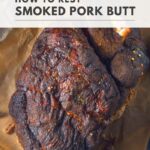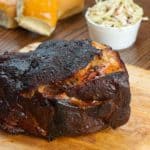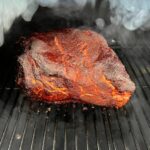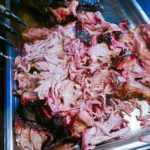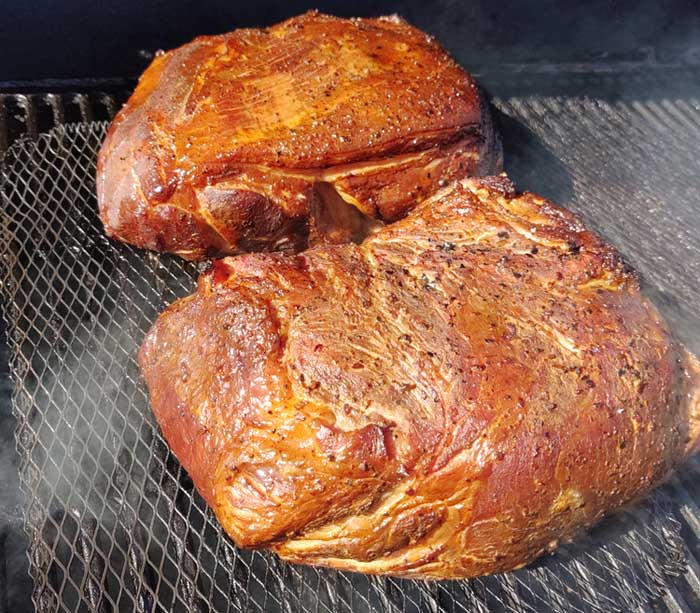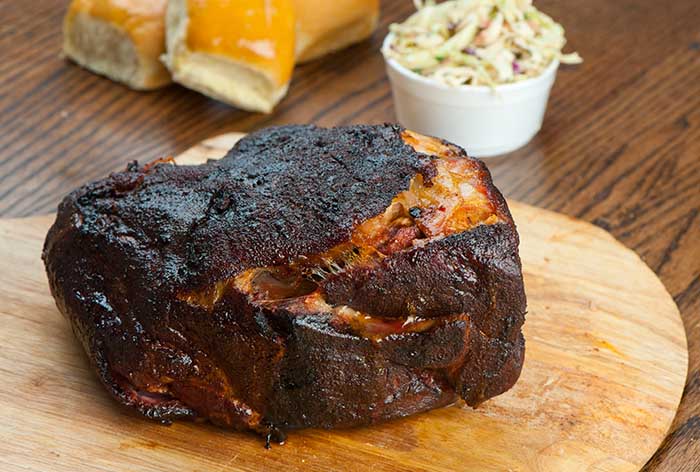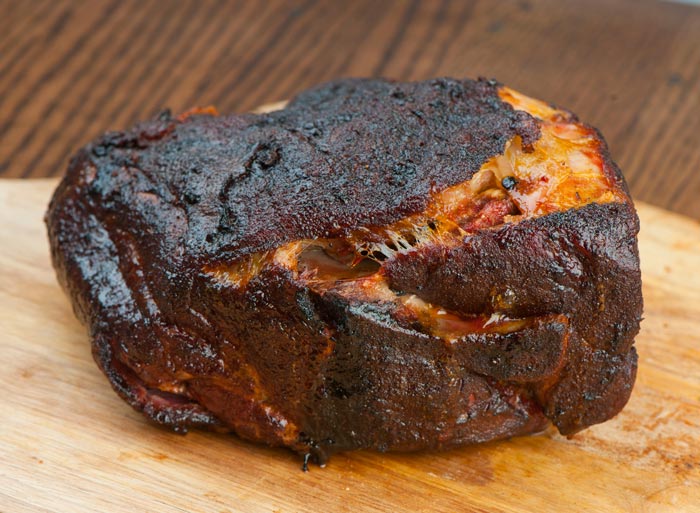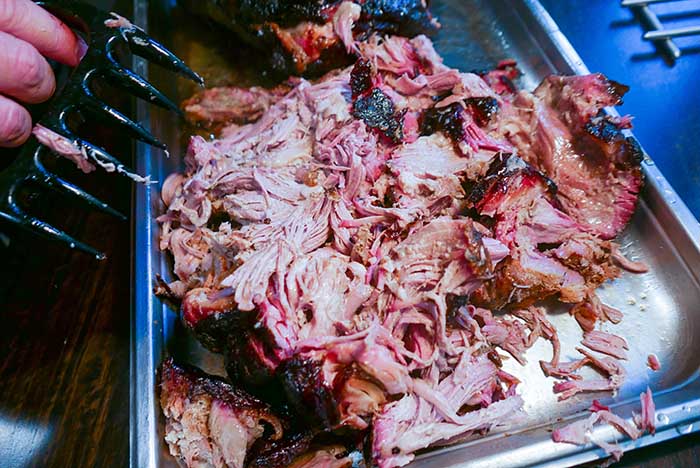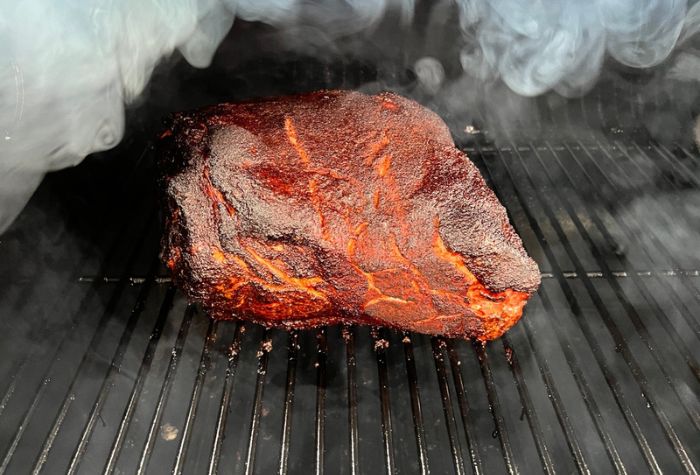Serve up the best smoked pork butt by getting meat resting right. From methodology to resting times, discover how to rest pork butt today.
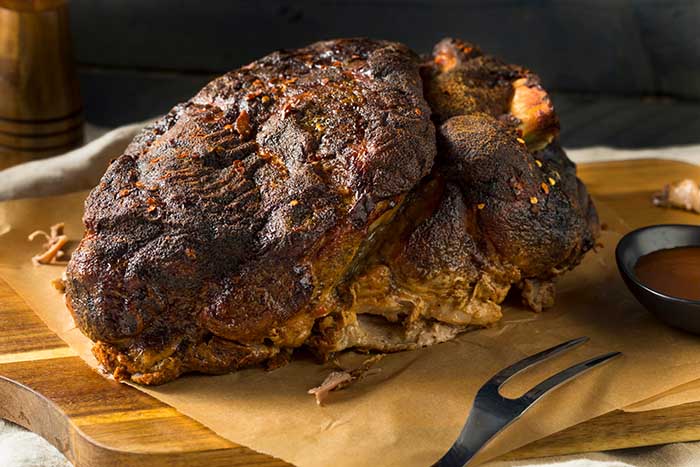
Serving up a truly mouthwatering smoked pork butt is a multi-step process that needs a bit of knowledge and a lot of patience to do it well. You have to give it time to marinate, cook, and rest.
Let’s focus on that last step. Waiting is the most challenging aspect of cooking a pork butt, especially when you just want to eat. However, if you take the time to let the meat rest, you’ll be rewarded with the best possible smoked pork butt in the end.
Discover the science behind meat resting and how long to let pork butt rest to make a plate of barbecue pork that’s out of this world. Let’s get smoking!
Why Should You Let BBQ Smoked Pork Butt Rest?
Most meats, including pork butt, are better if you let them rest after cooking, and that’s because they stay tender and juicy after slicing.
Resting meat has little to do with internal temperature and more to do with the meat fibers inside the cooked piece of meat. When meat cooks, the fibers inside contract, squeezing out the water between the fibers. If you cut the meat before the juices can settle and redistribute, they will go all over your cutting board.
For tender and juicy meat, you should let a pork butt rest. It gives the meat fibers time to relax after cooking and allows the reabsorption of the internal juices. The more moisture in the fibers, the less chance for dry, tough meat.
Some say resting isn’t necessary, and there is the potential for cold meat or carry-over cooking. While this may be true for smaller cuts, resting meat before cutting or pulling will consistently deliver a juicier meal.
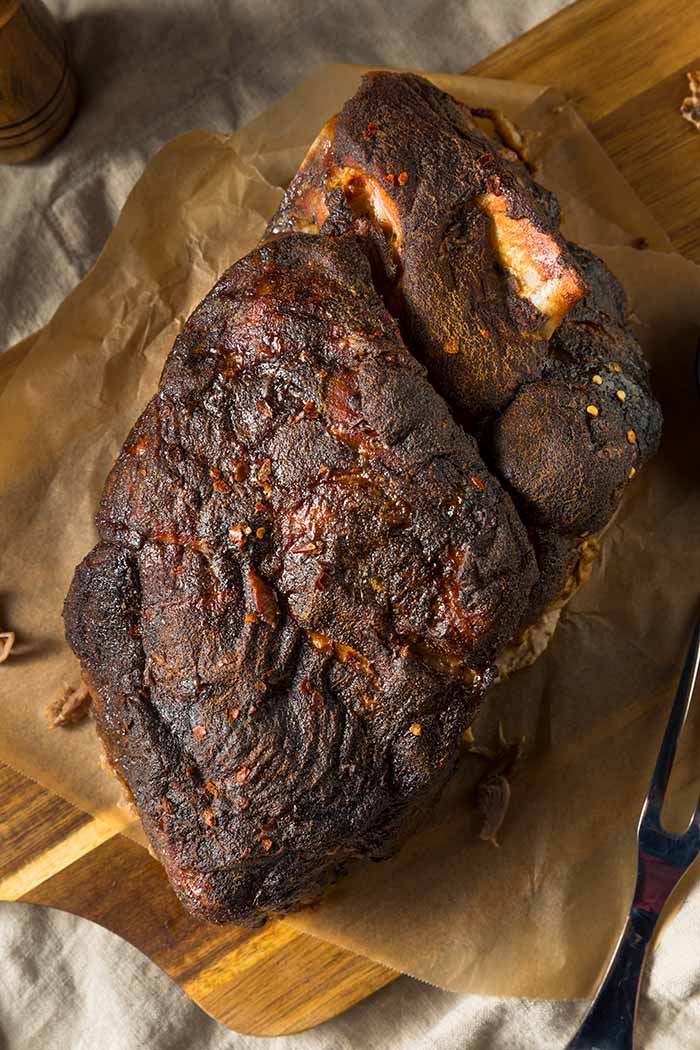
How to Rest Smoked Pork Butt
The best way to rest bbq smoked pork butt without getting cold is in a makeshift cambro. These insulated coolers keep food at or above 140°F (60°C) t in the safe zone for cooked meat. Cambros are common at restaurants when you need to prepare food in advance, but they are an expensive purchase.
Fortunately, you can make your own from everyday household items like a smaller cooler and some towels.
Step 1: Wrap the Pork Butt
To start, you should wrap the pork butt in butcher paper or tin foil. Tin foil holds heat better, whereas butcher paper is more breathable. If you only plan on resting the pork butt for the recommended time of 40-50 minutes, a loose covering should be enough. If you plan on letting it rest for longer because you won’t be serving until later that day, you should add a tighter wrap.
Step 2: Prepare the Cooler
Next, you should find a cooler to act as your Cambro. A small cooler that fits the pork butt with a little extra room is all you need.
Once you have your cooler, find some towels or blankets. You can wrap the pork butt in towels or bunch them inside the cooler to keep the heat close to the smoked pork butt. The purpose here is to limit the open space, and the amount of heat lost to the air.
Step 3: Let the Pork Butt Rest
Finally, here comes the difficult part: close your cooler and wait until it’s time to serve.
Alternatively, you can let the pork butt rest uncovered but keep in mind that doing so will lower the temperature quickly. The USDA advises cooking and keeping pork products at 145°F (63°C) for safe eating. Only rest in the open if you are serving soon or have another way to keep the meat hot, like a professional heat lamp.
How Long to Rest Pork Butt
Let the pork butt rest for around 45 minutes. A few minutes on either side of this recommendation won’t do any harm. This is the expert recommendation, and it produces a pork butt that doesn’t have juices seeping onto your board when you cut it. Fewer juices escaping translates to a moist pork butt that isn’t dry and stays warm through to the center.
The minimum time you should let it rest is three to five minutes, essentially allowing the meat to sit while setting the table and putting sides into serving dishes. Since smoking cooks at a higher heat, allowing the meat at least 15 minutes to absorb the juices is recommended.
Letting it rest for three-quarters of an hour allows the temperature to cool enough to handle it and for the juices to reabsorb.
Should I Cover Pork Butt When Resting?
Keeping the pork butt covered or leaving it uncovered while resting are both options, and both have benefits and drawbacks.
Covering the pork butt, you can choose between aluminum foil and butcher paper. Covering the pork butt after you finish cooking it can mean wrapping it in foil or paper, but it usually means making a tent and loosely setting it over the meat.
Removing the meat from the heat, testing it, and letting it rest that way will allow it to rest without overcooking or getting soggy with condensation. Tenting the pork loosely and giving steam room to escape should prevent the bark from getting soggy, provided it’s not left to rest for hours.
Leaving the pork butt uncovered is another option, although it puts the pork butt at the mercy of its environment as it quickly starts to cool.
You can try placing it in a heat-conductive dish like glass or metal to keep some heat. If you leave the pork butt uncovered, keep a close eye on the internal temperature because meat should stay above 145°F (63°C) to be food safe.
Most experts agree the best option is to wrap pork butt in butcher paper if it will be a while before serving or tent it with foil and set it off to the side. Butcher paper is breathable, as is loose tinfoil. Both methods retain heat and get great results.
How Do You Know When Smoked Pork Butt is Done?
Smoking pork butt requires that you keep an eye on the internal temperature. When a smoked pork butt comes off the heat, a probe thermometer should read 195 – 205°F (90 – 96°C). That way, you know the collagen inside the meat has had time to melt.
Eating undercooked pork is dangerous and can give you parasites or rare bacteria. Be sure not to remove the pork before the internal temperature is at least 195°F (90°C) and after cooking, hold it at a temperature of at least 145°F (62°C).
